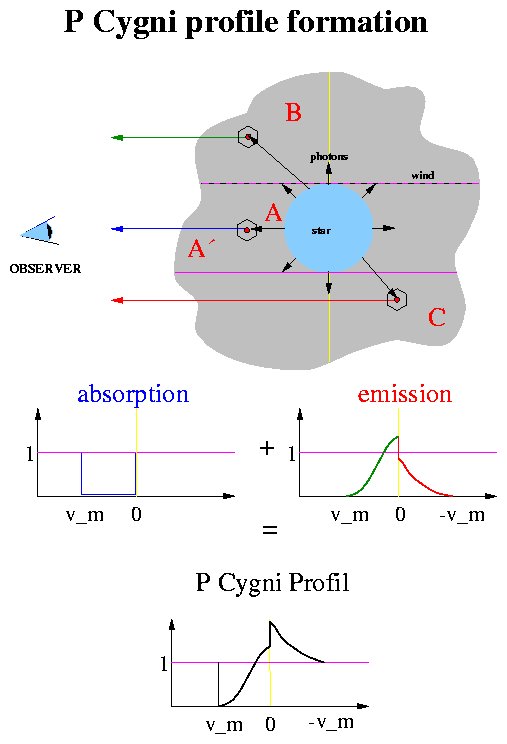P Cygni profile

Source: Rolf Kruritzki, University of Hawaii.
A P Cygni profile is a combination of features in a star's spectrum that points to an outflow of material in the form of either an expanding shell of gas or a powerful stellar wind. The P Cygni profile is characterized by strong emission lines with corresponding blueshifted absorption lines. The latter are produced by material moving away from the star and toward us, whereas the emission comes from other parts of the expanding shell.
P Cygni itself (also known as 34 Cygni) is a Be star, one of the most luminous stars known and only the third variable star to be discovered; it lies about 7,000 light-years away. It was first noted in 1600 in a place where no star had been recorded before, as a third magnitude star. The first well-documented observations were made by Willem Blaeu. On a globe made by Blaeu, now in a Prague museum, is written: "The new star in Cygnus that I first observed on 8 August 1600, was initially of third magnitude. I determined its position ... by measuring its distance from Vega and Albireo. It remains in this position but now is no brighter than 5th magnitude." Over the next few years, the star faded below naked-eye visibility, but returned to magnitude 3.5 in 1655, where it remained until 1659. It faded again below sixth magnitude and rose once more in 1665. After some fluctuations, it became steady at about magnitude 5 around 1715 and, during the last 200 years, has oscillated in brightness around this value. The brightness bursts are thought to be due to the star throwing off shells of gas. Satellite observations have shown, that below 2000 Å, many O and B stars display these kind of spectra lines. It is therefore ironic that the object that gave its name to the subclass is no longer considered a member of it! P Cygni is now grouped with an even more elite class of stellar celebrities – the S Doradus stars.
The recent detection of a P Cygni profile in the X-ray emission from Circinus X-1 means that this powerful tool for probing stellar winds and other stellar outflows is now available in an entirely new region of the spectrum.


